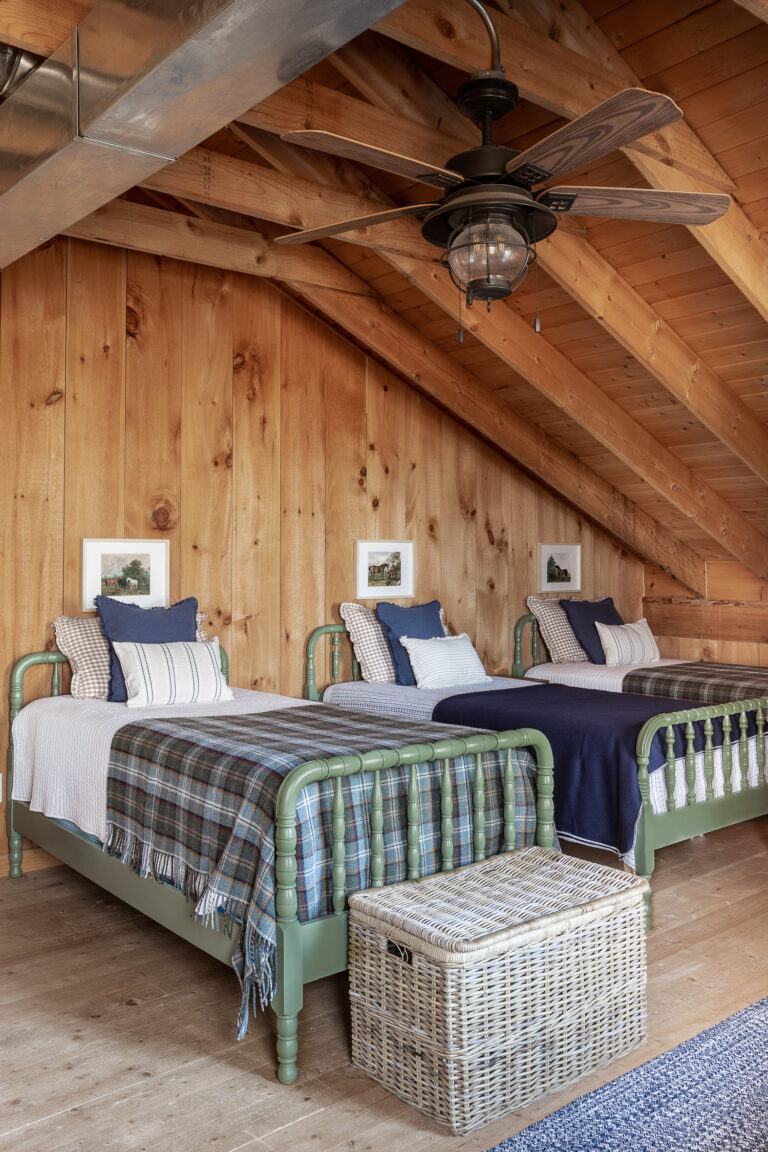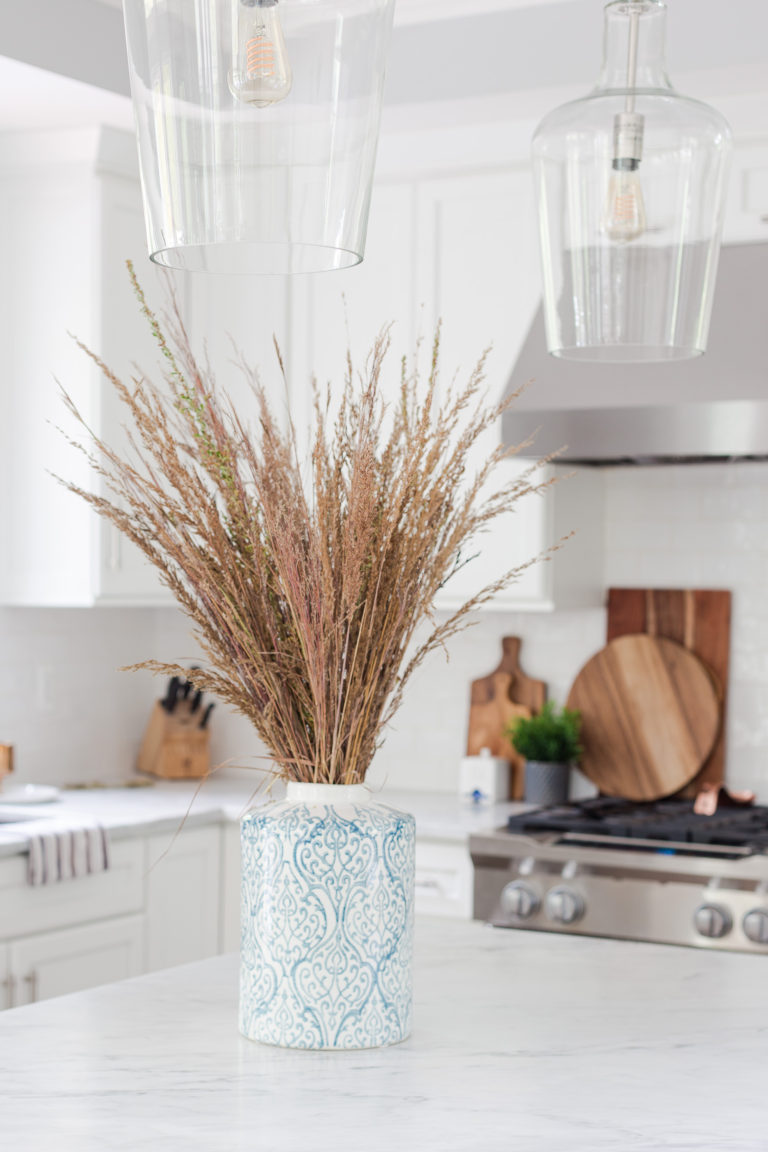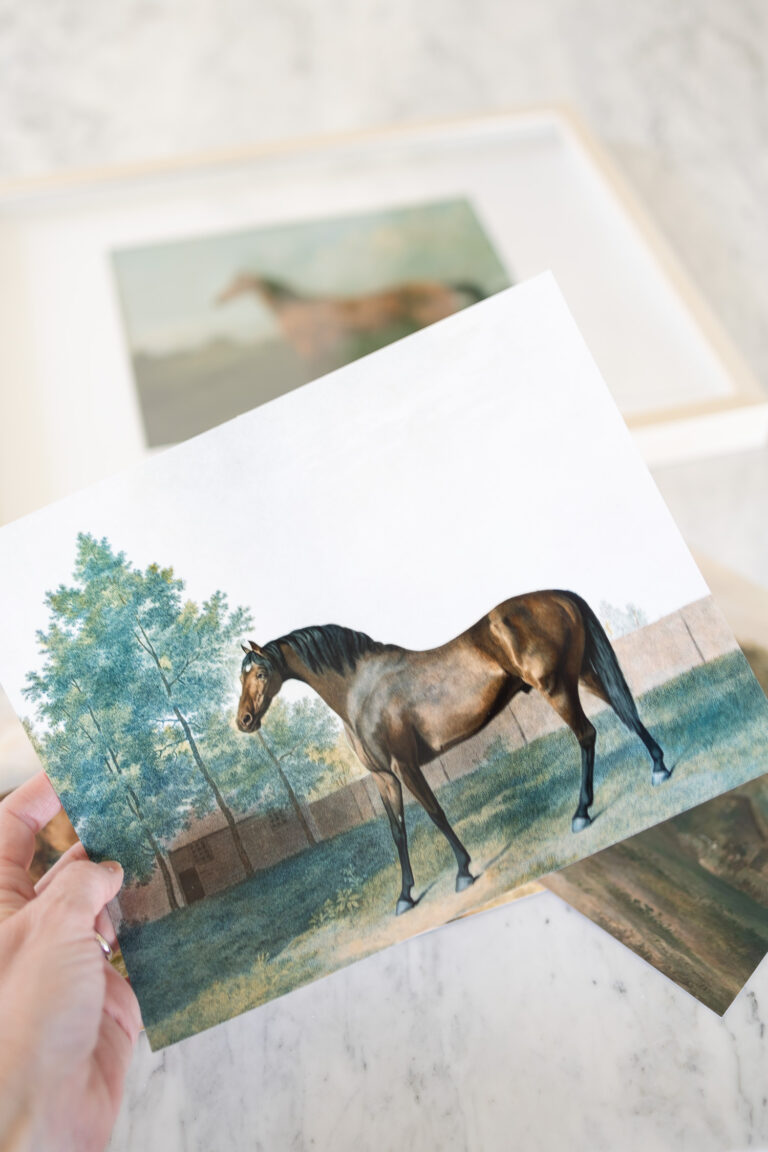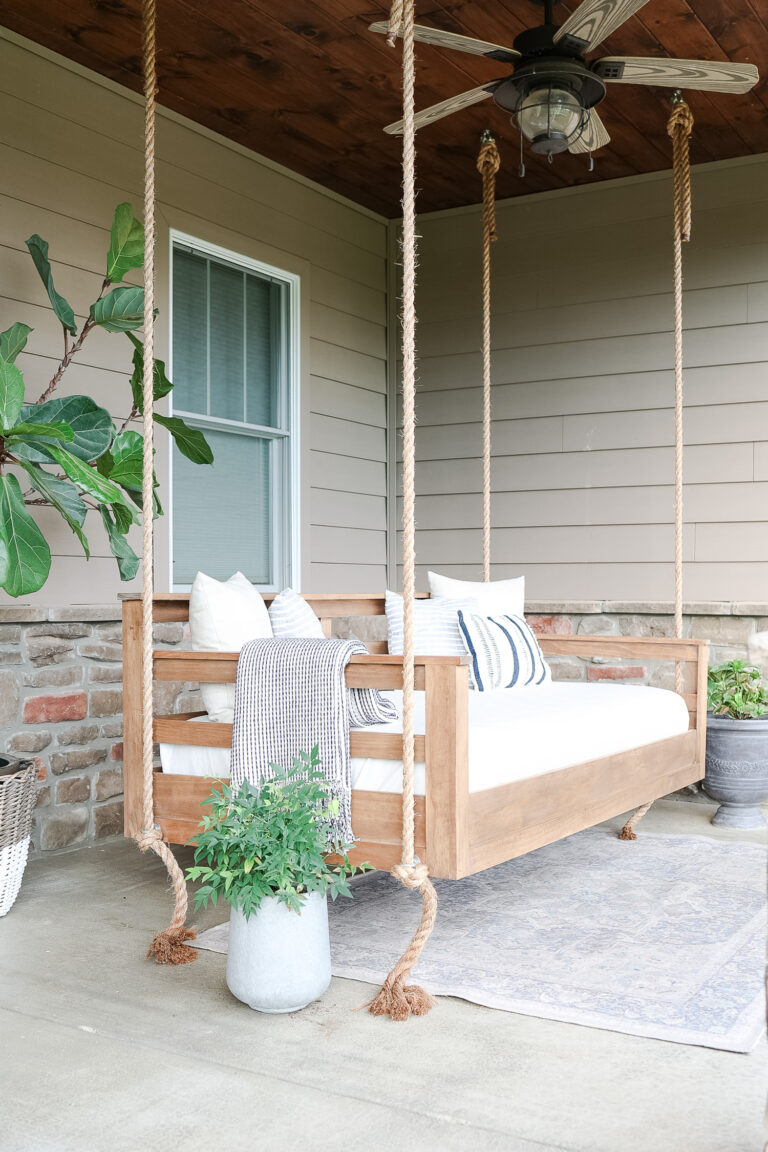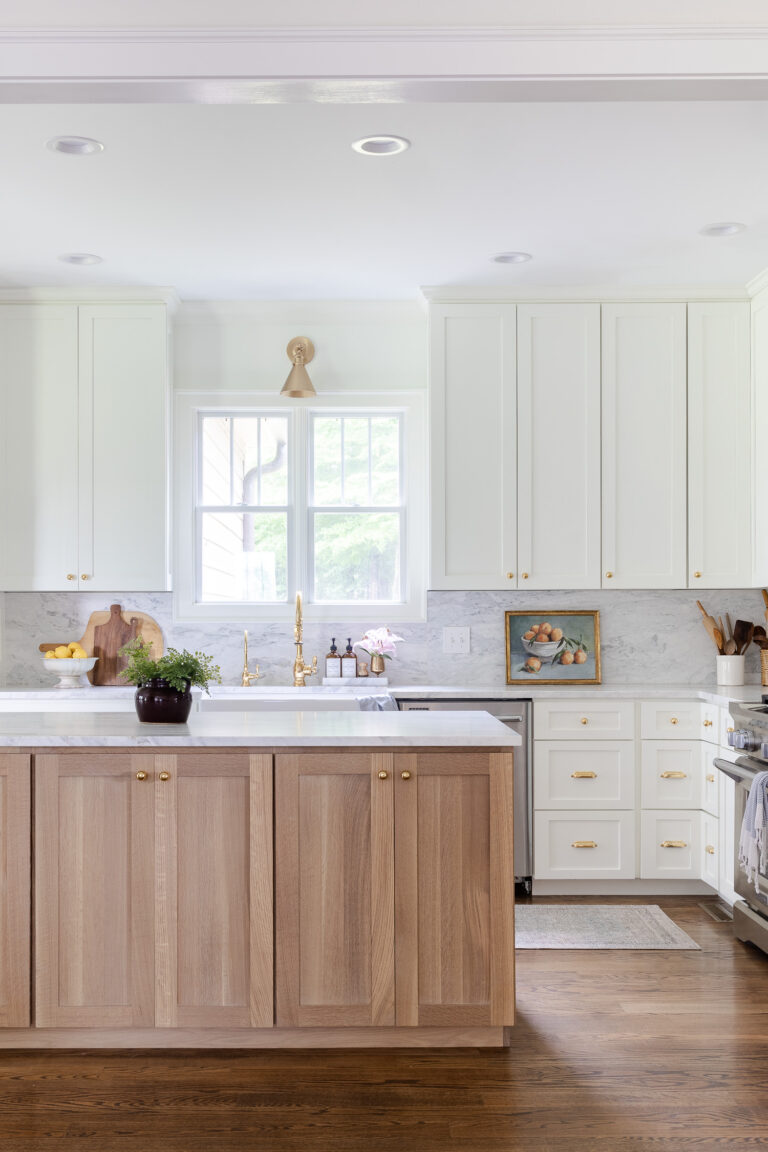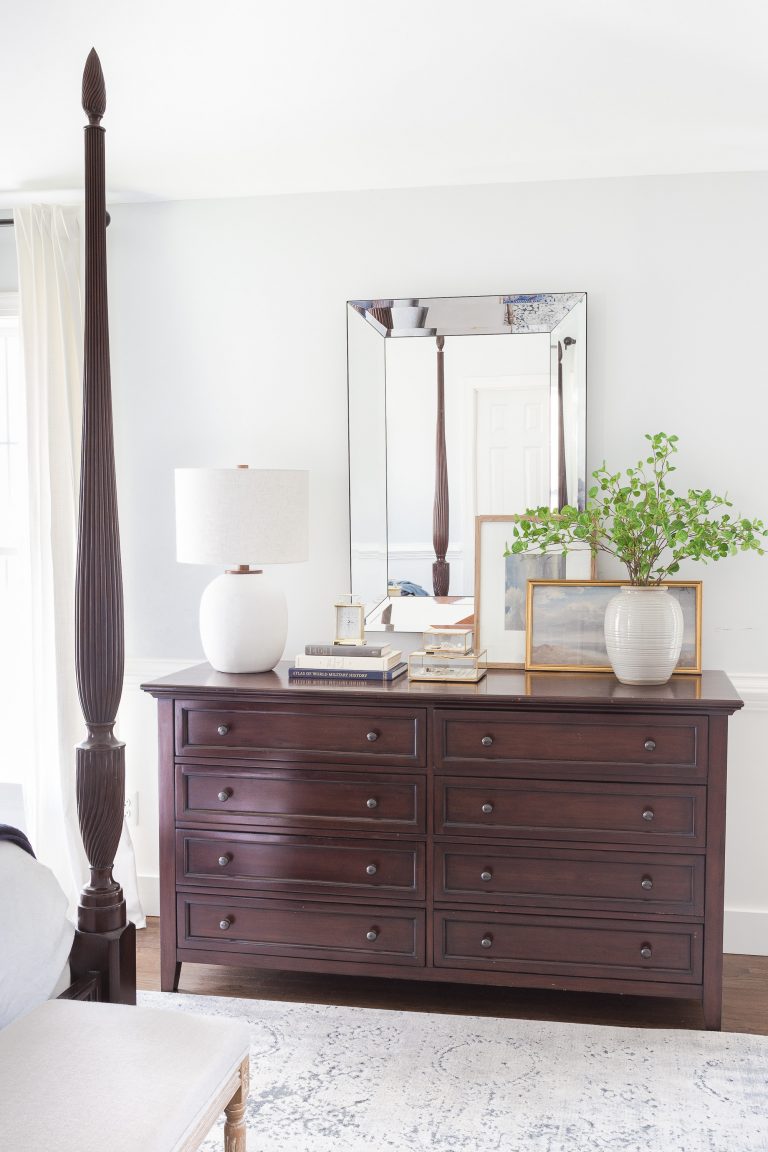How to Apply Gel Stain
Gel stain is great to use on all sorts of furniture projects and it’s hard to believe this is the first time I’ve ever used it. Now that I’ve used gel stain I don’t think I can go back to regular stain.
All these years of DIYing and this is the first time I actually even considered giving gel stain a try. Not sure I will go back to a normal stain after this. Applying gel stain is so much easier than a watery oil based stain. After refinishing our console table, I was amazed how much better I like this stain compared to a watery, more traditional stain.
Let’s jump right into how to apply gel stain plus all the details of this product.
This post contains affiliate links where I can receive commission from your purchases, thank your support. Please read my full disclosure.

We’ve had this World Market Everett Table for several years, but it needed a makeover for two reasons. (1) it had water rings and spill stains on the table top from years of it sitting in our living room and the family using it to set everything on. (2) The white wash finish felt dated to me and it needed a warm up.
Giving this table a warmer hue seems to have brought it more in line with the times. Since home decor has shifted from grays and white wash furniture to warm tones, it seemed time to update this lovely piece. I shared this table transformation on Instagram and was shocked how many wanted to do the same thing to their Everett console table.

What is Gel Stain?
If you have never used gel stain before, like myself, you might be asking what is it? Gel stain is a type of wood stain used to color and enhance the appearance of wood surfaces. Ir is thicker than traditional liquid wood stains. They are typically oil-based and are known for their ability to provide consistent, even coloration with less blotching and dripping compared to liquid stains.
Check out these other posts!
Best Paint Sprayer for Furniture
Best Paint Roller for Cabinets and Furniture
Easy DIY Coffee Table
Gel Stain vs. Regular Stain
What is difference between gel stain and regular stain? You might wonder if gel stain is better than a regular stain. That is going to be up to you decide and what stain is best for your project.
Here are some characteristics of gel stains:
- Thicker Consistency – Gel stains have a thick, gel-like consistency making them easier to control and apply to vertical or intricate surfaces. This thickness helps prevent the stain from running or dripping.
- Reduced Blotchiness – Gel stains are less prone to blotching, which occurs when wood absorbs stain unevenly and results in uneven coloration. The thicker consistency of gel stains helps to minimize this issue. Softwood pores soak up stain unevenly resulting in a blotchy finish. This is because some pores accept a lot of stain and some accept less, creating a blotchy appearance.
- Longer Drying Time – Gel stains typically have a longer drying time compared to liquid stains allowing for more precise application.
- Buildable Color – Achieving a deeper and richer color is easy to do by applying multiple coats of stain.
- Applied to Other Finishes – Gel stain also has the ability to dry on top of wood because it’s a varnish. This is helpful because it can be applied to the top of other finishes.
The comparison of the two stains is listed below. Keep in mind, each project is unique and will require the best type of stain for your desired outcome.

For my table project, I did decide to give the piece a light sanding with 120 grit sandpaper to remove the white wash finish. This enabled the gel stain to give me the desired finish. Even though gel stain can sit on top of another finish; that was not the look I was going for.
Gel Stain for Exterior Projects
Gel stains are generally intended for interior woodworking projects. If you need to stain exterior wood surfaces, you may want to consider a different type of wood stain that is specifically formulated for outdoor use and is more resistant to environmental elements.
How to Apply Gel Stain to Unfinished Wood
This is the table before I sanded it and applied the stain. We purchased this World Market Everett Table probably eight years ago at least. Not bad, but needed an update and the table top had water rings and stains that needed to be sanded out and refinished.

Step 1: Prep the Wood
I always sand wood before staining. Whether it is a new unfinished piece or a piece I am refinishing. Sanding off the old finish is the best way to ensure your new finish turns out the best!
Using wood filler, fill in any holes or dings. Sand the wood filler to an even finish.
After sanding and filling any holes, I usually wipe the entire piece down with a clean rag and some acetone. This ensures all the leftover dust from sanding has been removed.

Step 2: Apply the Gel Stain
Applying gel stain is similar to applying traditional wood stain.
Apply the gel stain using a rag or a foam brush. Go against the grain, then go back over the stain brushing with the grain. Since gel stain ultimately sits on top of the wood; give a second pass to go with the grain. This ensures that any staining marks blend into the grain.

You can allow the stain to sit for up to five minutes and then remove. I tend to wipe on and wipe on fairly quickly; not really allowing much dry time. This gives me more control of the color; I can always add more stain.
Careful not to allow the stain to sit too long as once it dries it is harder to remove.


I liked applying gel stain with this lambswool stain pad mit. It made the job a whole lot easier.
Finishing Wood Over Gel Stain
I decided to apply a wipe on polyurethane once the stain has dried. You do not have to finish your piece with a protective coating if you do not want to.
Allow the gel stain to dry for at least 24 hours before applying any type of finish. Oil-based polyurethane, varnish, and shellac are all great choices for finishing gel-stained wood. Careful on using water-based polyurethane directly over gel stain. Gel stain is oil-based and oil-based and water-based polyurethane don’t always work well together.
Lightly sand in between each coat and wipe away the dust. You can add as many coats as you like. I used three coats on the table top and two coats everywhere else.
I chose the wipe on poly because of it’s ease of use and I wanted the table protected from water rings from sitting glasses and food etc.


Sources
Frequently Asked Questions
That depends on your project. If you are staining a soft wood; then yes, a gel stain is better to use.
Gel stain is more expensive than regular stain. Gel stain negates the need to buy wood conditioner so maybe that helps make up the difference.
It dries fairly quickly to the touch, but do not add a final top coat finish for at least 24 hours.
Yes and no. Depends on your project. You DO NOT need to sand down to bare wood. This is what makes using gel stain an advantage on previously finished wood. For raw wood, you need to sand before applying the stain.
Gel stain can be thinned with mineral spirits resulting in a lighter color. Thinning creates a glaze, which can be used either for staining or adding an antique appearance on top of paint.
Gel stain can be used on wood veneer and laminate furniture. Lightly sand the surface with 180 grit sandpaper first. Apply very thin coats of the gel stain and allow at least 2 hours of dry time between coats.
Once the paint is fully cured, you can paint over it with latex paint.

Follow for home decor, DIY and to shop: Instagram | Pinterest | LiketoKnowit




